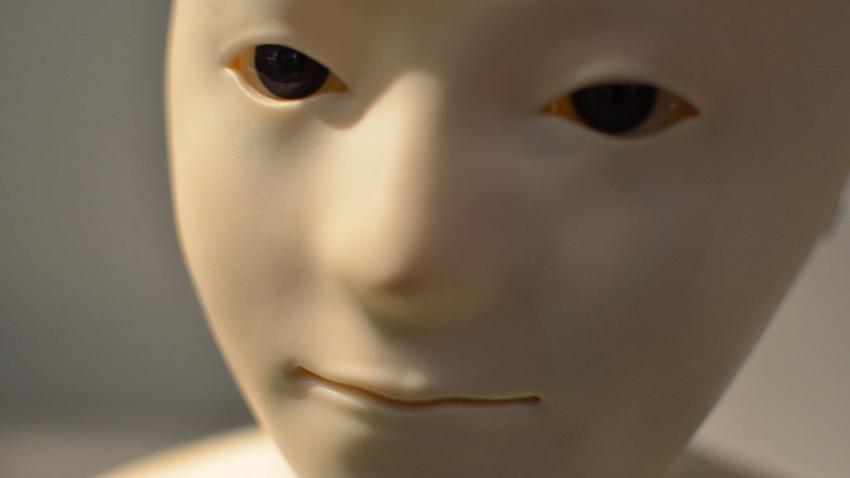In 1965, philosophy professor Hubert Dreyfus, a staunch critic of artificial intelligence, boldly claimed that a machine would never beat a human at the game of chess. It would only be two years before the sceptical scholar was himself checkmated by an MIT-developed computer.
By 1997 machines were advanced enough to defeat one of the greatest chess minds of his time – Garry Kasparov. In 2015, our species’ finest player of the very intuitive and “human” game of Go repeatedly conceded to Google’s computer.
With the rapid technological advancement of recent years, computers are increasingly encroaching on domains that were previously considered exclusively human. The astonishing progress in such areas as artificial intelligence (AI), robotics, 3D printing and genetics has enabled computers to perform the tasks of architects, medical doctors, music composers and even a 16th century Dutch master of painting.
Nearly every day brings news of remarkable feats achieved by computers or robots, and with them a gnawing question: Will machines edge us out of brain jobs?
This question is made even more unsettling by the recently unveiled world population trends. Latest UN DESA data show that, by 2050, our population is expected to reach 9.8 billion people, over 6 billion of whom will be of working age. Meanwhile, we are already struggling with finding decent employment for 71 million young people worldwide.
It is easy to see why new technologies are increasingly viewed as a major threat to labour markets. Some estimates even claim that a staggering 80 per cent of jobs run the risk of being automated in the coming decades.
A new report by UN DESA’s Development Policy and Analysis Division (DPAD) finds some of these calculations unrealistic. Drawing from historical lessons of past industrial revolutions and from a wealth of current research, the study offers several reasons why our planet is not on track to becoming a robot’s world just yet.
First off, artificial intelligence, 3D printers and other innovations are generally designed to excel at a very specific set of tasks. They will rarely be able to substitute an entire occupation, which, in most cases, requires much more versatility and adaptability.
Secondly, new technologies not only destroy, but also create jobs. “Throughout history, technological innovations have enhanced the productivity of workers and created new products and markets, thereby generating new jobs in the economy. This will be no different for AI, 3D printing and robotics,” says the report.
Thirdly, just because it is technically feasible to substitute an entire profession with computers, does not mean it will happen. Various economic, legal, regulatory and socio-political factors will prevent many occupations from disappearing. A recent study found that by 2016, only one out of 270 occupations listed in the 1950 US census had been eliminated by automation – that of an elevator operator.
In many cases, people will continue to do the work cheaper than machines. In others, we will have to make tough legal and political choices. For example, who should be held responsible for a medical AI’s wrong diagnosis – the system’s manufacturer, the programmer or the doctor?
But even if our nearest future looks nothing like the set of Blade Runner or other dystopian science-fiction movies, we should not downplay the disruption that AI, robotics and other innovations are already bringing.
New technologies are contributing to increasing inequalities – both between different groups of workers and between labour and firm owners. While they do not cause widespread loss of jobs, they do change the demand for certain skills and contribute to a shift towards more flexible but precarious “contingent work” arrangements.
Technology is one of the reasons behind the growing disparities within the work force in many countries, with middle-wage earners losing ground. Internationally, the lack of access to new technologies in least developed countries and the rapid gains by manufacturing powerhouses threaten to increase inequalities between countries even further.
If left unchecked, these disruptions caused by advanced technologies may have enormous consequences for societies. This is enough reason for policymakers to look closely at technological progress: what it means for their countries and how best to intervene.
“History shows that new technologies can lead to great gains for our economies but are not without pain for some people and communities. The overall impact will depend highly on social institutions and policies,” said Pingfan Hong, Director of DPAD. “Policies are needed to help workers adapt to the new reality and to ensure their participation in the benefits arising from technology.”
Governments may be tempted to focus on the benefits of technological progress, while largely ignoring its negative impacts. Low-income countries are particularly vulnerable unless policymakers have a clear understanding of the risks and potential of these new technologies. The sooner we start re-thinking and re-designing labour market policies, social security schemes and taxation systems, the better we will adapt to the future that is already happening.
About UN DESA
UN DESA Products
UN DESA Divisions
- Office of Intergovernmental Support and Coordination for Sustainable Development
- Division for Sustainable Development Goals
- Population Division
- Division for Public Institutions and Digital Government
- Financing for Sustainable Development Office
- Division for Inclusive Social Development
- Statistics Division
- Economic Analysis and Policy Division
- United Nations Forum on Forests
- Capacity Development Programme Management Office

